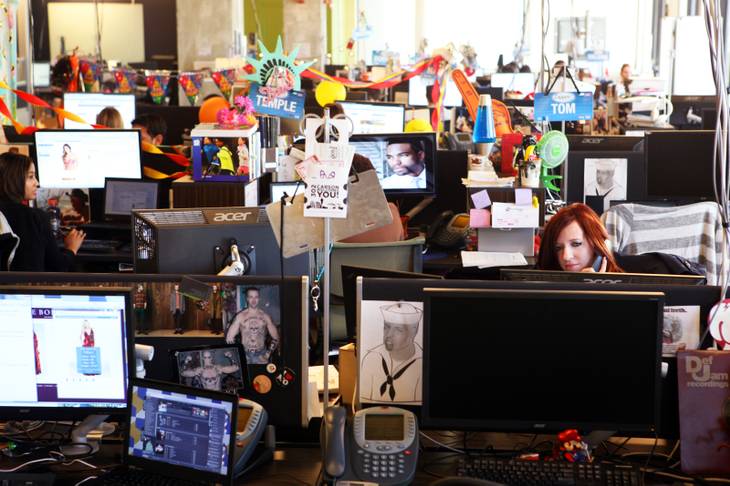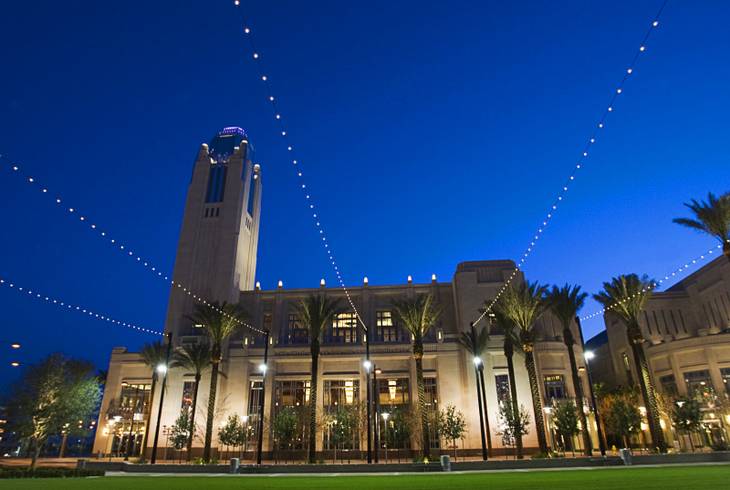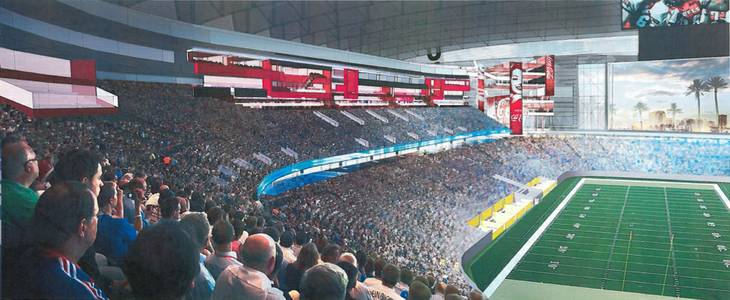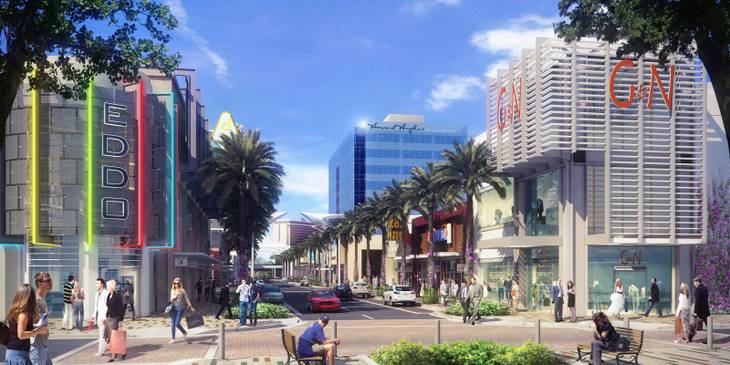The push for online gambling. Development on the Strip and downtown. An investigation into an attorney-builder scam that left homeowner associations in a lurch.
There was no shortage of news in 2012.
And many of the topics that dominated the discussion in boardrooms and lunch rooms across the valley will continue to make headlines in 2013.
So in case you missed them, or to give you a heads up for next year, here’s a look at some of this year’s biggest business stories.
-
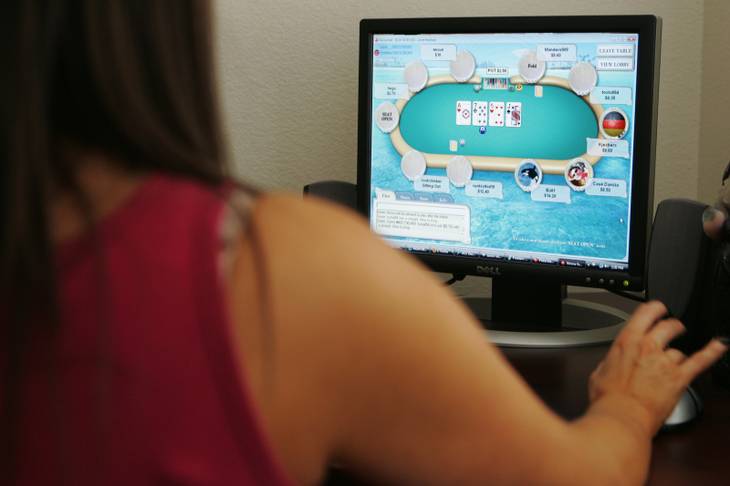
Online gaming
The push to legislate online gaming — or stop it — is perhaps the biggest story of 2012. The issue is rife with politics and, depending who you talk to, either could bolster or butcher Las Vegas’ economy.
Even as congressional action on a national online gambling strategy stalled late in the year, Nevada’s newly created online intrastate poker industry was gearing up to launch operations.
By mid-November, 16 companies had received final approval to participate in intrastate online gambling and more were in the licensing pipeline. Several were beefing up their staffs and announcing hiring plans even before their gaming licenses were issued.
South Point Poker by casino mogul Michael Gaughan and Ultimate Gaming/Ultimate Poker from the corporation behind the UFC and Station Casinos appear to be the frontrunners so far; both are working to be the first real-money online poker site to launch legally in Nevada. Each hopes for a launch at the end of the year or in early 2013.
Other big players in the industry are expected to be Caesars Entertainment, MGM Resorts International, Boyd Gaming, Wynn Resorts, IGT, Bally Technologies and WMS Industries.
-
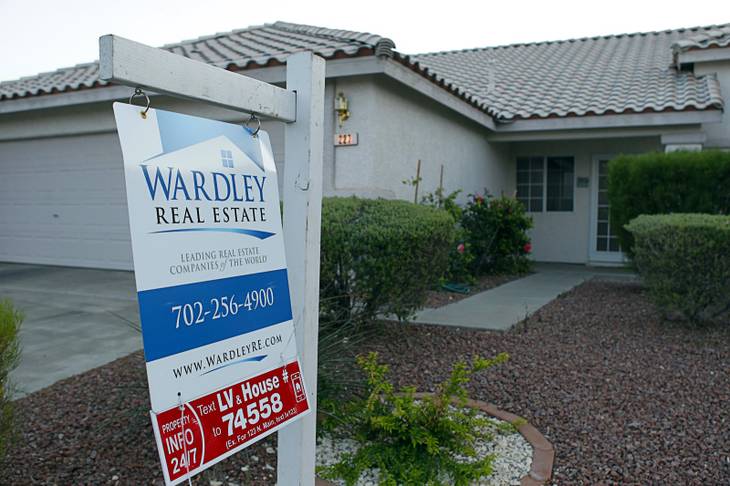
The economy
While most of the country experienced a slight, if uneasy, improvement in the economy this year, Southern Nevada continued to suffer from the effects of the Great Recession with high unemployment and foreclosure rates that rank among the steepest in the nation.
The primary reason: Nevada has to climb out of a bigger hole than most of the rest of the country.
Before 2008, Southern Nevada had the nation’s fastest-growing state economy that lead the country in population growth and job creation. The 1990s and early 2000s were the boom years for Las Vegas with megaresort openings every few months and houses being sold faster than they could be built.
Then everything crashed.
Today, the glimmers of hope are small: Las Vegas is close to hitting a record number of tourists; gaming numbers are up slightly; companies are moving here and beginning to hire workers.
Experts predict it will take another three to five years for the valley to fully recover. But if Southern Nevada can limp through it, they say, the region could see long-term economic growth that rivals the glory days.
-
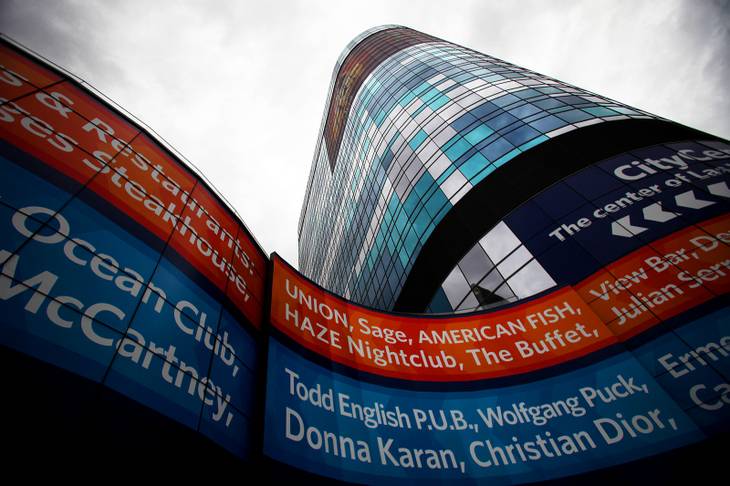
The Harmon Hotel
After months of legal wrangling, a judge in July decided the fate of the newly-built Harmon Hotel: It will never open and instead will be demolished. We think.
CityCenter gained court approval this summer to implode the $275 million, 26-story Harmon hotel tower. The complex is half owned and managed by MGM Resorts International.
CityCenter says the building has to come down because defects could cause it to collapse in an earthquake. The best way to address the hazard is to raze the hotel, the company says.
But the lead builder, Tutor Perini Building Corp., of Sylmar, Calif., says the Harmon can be repaired. It accuses CityCenter of using the defects as an excuse to remove a building it doesn’t need given Las Vegas’ glut of hotel rooms.
A trial set for 2014 could determine who is to blame for the problems. CityCenter points to contractors and subcontractors, accusing them of widespread problems with missing or improperly installed reinforcing steel. The builders blame each other and claim CityCenter was responsible for faulty designs.
Whether the tower will actually be imploded, and when, remains to be seen. CityCenter and Perini continue to argue in court about whether the building has been adequately tested to prove the defect claims.
-
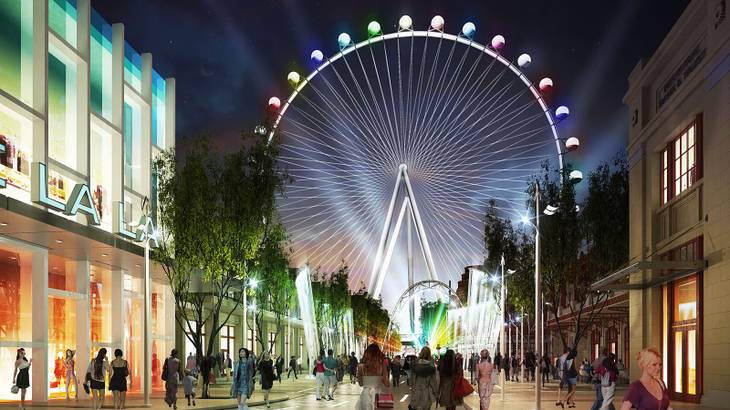
Strip development
Development continued to the change the landscape of the Strip this year. It just happened a little bit more quietly than during the boom years.
Instead of groundbreakings for new megaresorts every few months, casino companies announced renovations and rebrandings of existing resorts.
Consider: A new SLS hotel is the works for the former Sahara. A Nobu Hotel is planned for Caesars Palace. The Imperial Palace is being rebranded and refurbished as the Quad, while The Hotel at Mandalay Bay will get a new identity as the Delano.
Two new Ferris wheel attractions also are going up at opposite ends of the Las Vegas Boulevard — the SkyVue near Mandalay Bay and the High Roller across from Caesars. The High Roller is part of Caesars Entertainment’s upcoming Linq project, a $500 million entertainment district.
MGM Resorts International also announced plans to build a water park at Circus Circus.
-
Downtown development
This was a big year for downtown Las Vegas. And it had little to do with casinos.
A new City Hall opened, as did the Smith Center for the Performing Arts. The center has been hailed as one of the nation’s premiere concert halls, and its Broadway series was an immediate success with 11,000 people subscribing for tickets.
Art Square opened in October with 16 tenants and 25,000 square feet of galleries, and the Las Vegas Premium Outlets announced a 25-store, 150,000-square-foot expansion.
Fremont Street’s casino district also brought news.
The Golden Gate got a face lift, while the former Fitzgerald’s became the D .
The buzz should continue next year, with plans for a permanent zip line, and the completion of the Lady Luck’s transformation into the Downtown Grand.
Zappos also makes its move downtown next year. The Henderson company plans to move 2,000 employees to the old City Hall in about a year.
-
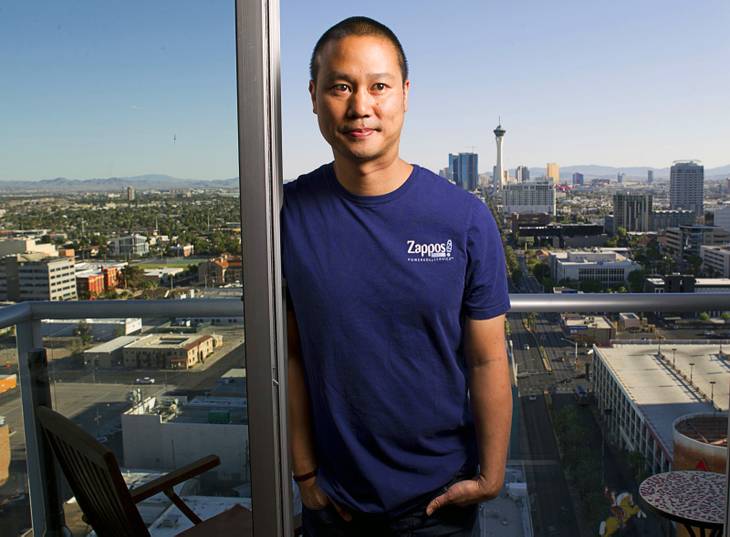
Tony Hsieh
Speaking of Zappos, who knew a shoe seller could transform a neighborhood, attract new development and put Las Vegas on the map for something other than gambling?
That’s precisely what Zappos’ leader Tony Hsieh did this year.
Through the Downtown Project, Hsieh and his friends set aside $350 million to invest in the neighborhood, including $100 million for housing, $50 million for education and $50 million for startups.
Thanks to the buzz, downtown has become the center of Las Vegas’ burgeoning tech industry. Several entrepreneurs have settled there to launch social media sites, smart phone apps and other Internet-based services.
Hsieh also is behind the Central Container Park planned for Fremont and Seventh streets, which will include 11,000 square feet of retail and 3,200 square feet of office space, shops and restaurants. The project, approved by the City Council in October, is slated to open in 2013.
-
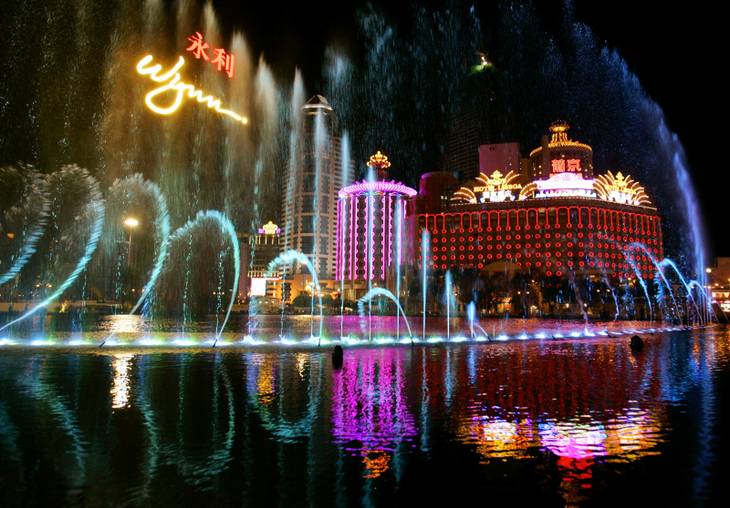
Gaming in Macau
The Asian gaming market in 2012 continued to rival, and exceed, Las Vegas’.
The gaming win in Macau far surpassed the win on the Strip, and its lead is expected to continue to grow. The November gaming win in China was $3.1 billion, up almost 8 percent from a year before, well ahead of the $893 million won statewide in Nevada in September, the most recent month for which numbers were available.
Growth in Macau, driven both by high rollers and the massive Chinese middle market, quickened this year when Las Vegas Sands opened the second phase of its Sands Cotai Central resort. That included the first of two towers for a Sheraton hotel. Chairman Sheldon Adelson also announced plans for another Macau resort: the $2.7 billion Parisian.
Not to be outdone, Wynn Resorts is developing a second $4 billion resort in Macau, while MGM Resorts International is developing a second resort in China for about $2.5 billion.
Despite the casino expansion in Asia, as well as Europe and the United States, Las Vegas remains the world’s gaming capital with the highest concentration of headquarter operations for major casino operators and slot machine makers.
-
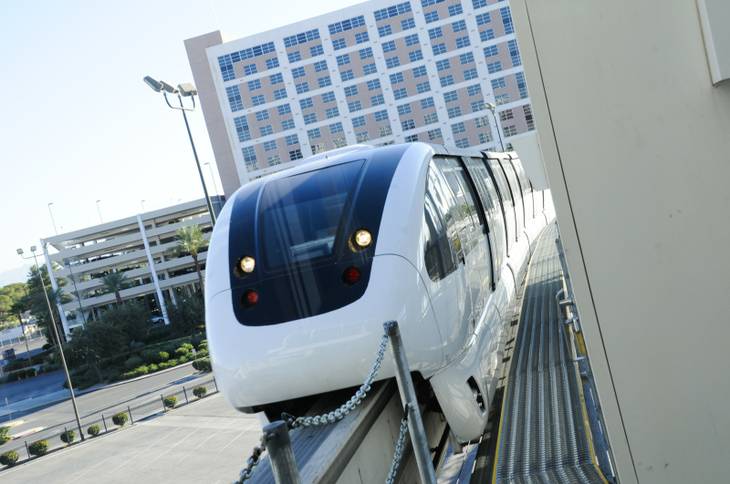
Corporate bankruptcies
This year marked the end of several corporate reorganizations as the economic slowdown brought an unprecedented number of business bankruptcies in Las Vegas.
Not every company had a smooth ride through the process.
Post-bankruptcy, the Nevada Cancer Institute and the Las Vegas Monorail, for example, ended 2012 with dramatically different outlooks.
Monorail officials talked about growth, marketing and route expansions as they pulled out from the red. The Nevada Cancer Institute, on the other hand, planned to close and lease its space to another party.
In the gaming sector, Station Casinos, Aliante Gaming, Hooters and Affinity Gaming all emerged from bankruptcy and appeared to be doing well financially after shedding debt. But the Riviera, even after exiting bankruptcy, continued to struggle. And Jerry’s Nugget was just getting started in its bankruptcy case, which will likely extend well into 2013.
Non-gaming bankruptcy action also continued in 2012, with Ahern Rentals and American West Homes trying to emerge from corporate reorganization and home builder Jim Rhodes continuing to fight a complaint filed by creditors claiming he drained Rhodes Homes of assets before putting it into bankruptcy in 2009.
-
Sports stadiums
Sports arenas and stadiums were a hot topic in 2012, despite the weak construction market. Four major proposals were in the works:
• UNLV Now, a 60,000-seat stadium for college football and basketball, concerts, conventions and more. The $800 million project would be developed by UNLV and Majestic Realty Co. and was approved by Nevada regents in late November.
• Developer Chris Milam proposed building an indoor arena and three stadiums near the M Resort at a cost of more than $1 billion. But no teams have said they would move there, and Milam told city officials late this year the project can’t be built unless his development agreement with City Hall changes. That came after Henderson City Attorney Josh Reid asked federal officials to stop their sale of land to Milam.
• Las Vegas city officials have been working with the Cordish Cos. to build a 20,000-seat, $400 million arena on 20 acres in downtown’s Symphony Park.
• The Las Vegas Arena Foundation, backed by Caesars Entertainment, wants to build a 20,000-seat, $500 million arena on the Strip. The foundation hoped to finance the project with a 0.9 percent tax on retail sales within a three-mile radius of the site. But in June, the Nevada Supreme Court ruled that a foundation petition was deceptive and misleading. The high court considered the case again and in August invalidated 200,000 signatures.
-
Shops at Summerlin Centre
The Shops at Summerlin Centre got new life in 2012. The center was supposed to be a sprawling, pedestrian-friendly retail district. Instead, construction stopped during the recession and the mall’s steel skeleton sat untouched off the 215 Beltway.
In September, developer Howard Hughes Corp. announced that the project, now called the Shops at Summerlin, was back on track and would open in late 2014 with Macy’s as an anchor tenant. Dillard’s also announced it will open a store there.
The project is slated to have more than 125 stores and restaurants. It will be a part of a 106-acre, 1.5 million-square-foot development that includes a nine-story office building.
It also could feature professional baseball.
Howard Hughes and businessman Steven Mack got clearance in October to potentially acquire the Las Vegas 51s from casino owner Derek Stevens. League officials want Stevens to sell the team because of his gaming interests.
The city of Las Vegas owns the land beneath Cashman Field and has sought better uses for it, but a buyer or tenant would have to provide a new facility for the team if changes occurred.
Howard Hughes wants to help the city find a new use for Cashman, thereby requiring a new stadium be built. Time will tell if it sprouts near the Shops.
-
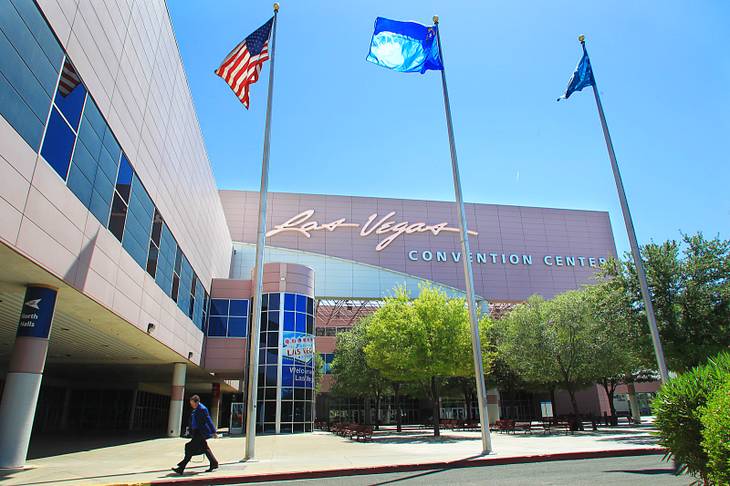
Convention Center rehab
An extreme makeover of the Las Vegas Convention Center is back in play after the recession torpedoed efforts to overhaul the 3.2 million-square-foot facility.
Officials from the Las Vegas Convention and Visitors Authority spent much of the year meeting with major convention and trade show customers to gauge their needs and wants. Once construction priorities are set next year, the LVCVA will determine a price tag for the project, which is expected to begin in 2014. Previous estimates, made when the renovation plan first surfaced in 2005, estimated a cost of $890 million.
It’s important to keep the building fresh so competing convention centers don’t lure shows away from Las Vegas, said Terry Jicinsky, the LVCVA’s senior vice president of operations.
The city has three of the top 10 largest convention centers in the country and hosts 55 of the country’s top 250 shows, according to Trade Show News Network.
In its 54-year history, the Convention Center has had 14 renovations. The last was about 12 years ago.
Convention facilities in Chicago, Atlanta, San Diego, Orlando, Los Angeles and San Francisco have all had major renovations or expansions in the past 10 years.
-
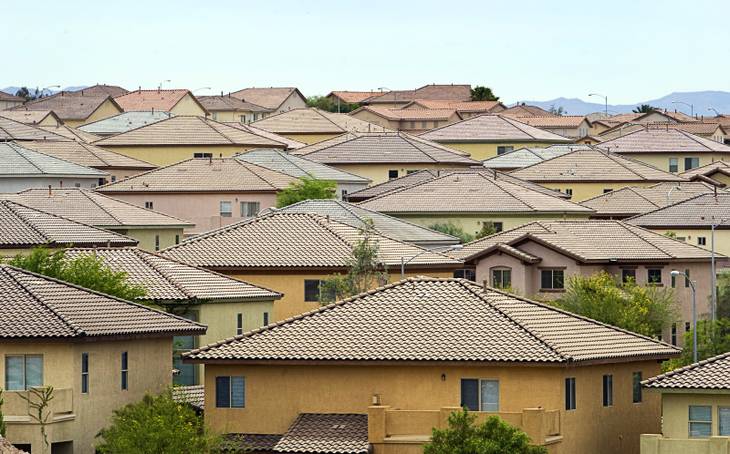
Homeowner associations
Homeowner associations had a rough year in 2012 with criminal investigations looming and dwindling funds due to foreclosures.
This year brought a series of indictments, guilty pleas and untimely deaths to several alleged participants in a scheme involving HOAs, shady attorneys and a building repair company trying to cash in on construction defect lawsuits.
Investigators say construction company owner Leon Benzer, attorney Nancy Quon and others rigged elections to get their friends elected to HOA boards so that the boards would award repair work to Benzer and legal work to Quon. Lawsuits say Benzer pocketed the money without repairing the buildings.
Benzer has not been charged criminally and has declined comment. Quon committed suicide in March.
More than two dozen others pleaded guilty in the scheme. More guilty pleas and indictments are expected.
A dozen HOAs were victims. Some will likely be tied up in court for years trying to recover their losses.
Many HOAs also have seen their budgets devastated by an influx of foreclosures. Repossession of homes by banks left no one to pay the monthly HOA assessments for vacant homes.
This year, lawsuits continued to stream into the courts from buyers who said they were being gouged by HOAs demanding they pay the assessments.
